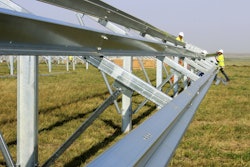While visions of a frigid, snow-covered Siberia or Moscow might dominate our thoughts of Russia, the country’s vast steppes and plains allow it to be one of the world’s top producers of crops like barley, oat, rye and wheat. These crops play a key role in generating over $15 billion in exports for the country.
As it looks to capitalize on resources outside of oil and gas, Russia is reportedly looking to increase grain production by as much as 25 percent over the next fifteen years. The first step is investing an estimated $80 billion dollars to develop 190,000 square miles or 122 million acres of additional farmland.
But just like any production ramp-up, Russia is not only looking at its raw materials, but the equipment that it will need to help reach these goals – including unmanned agricultural machinery.
The end goal is to have unmanned harvesting equipment in the fields by 2018. Additional planting, fertilizing and weeding equipment would follow – some of which could incorporate drone technology as a way to monitor field conditions in making key pesticide application and irrigation decisions.
As far as how much government and private funding has been invested in the technology – reports vary from $4-$6 million over the next two years to as much as $230 million over the next five.
Now, the concept of unmanned vehicles in farming is nothing new, but the Russians appear to be working on more than just retrofitted tractors or systems dependent on embedded sensors and highly regimented field row constructs.
Unmanned harvesting equipment could be a huge solution in addressing worker shortages, timely food production challenges, and it would give Russian farmers a significant advantage.
From an unmanned equipment perspective, a durable receiver still needs to be developed for the GLONASS/GPS navigation system, but the bigger challenges lie in producing dual controllers for both the vehicle and any hydraulics associated with the working field machinery.
Early projections have unmanned functionality only adding about 20 percent to the cost of current versions of the equipment. The problem is that easily becomes another $60,000 to $100,000 when looking the end-prices of quality combines and harvesters.






















